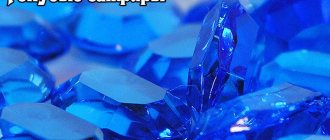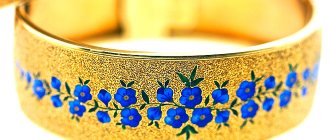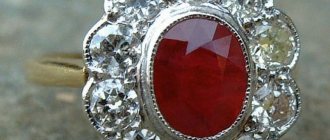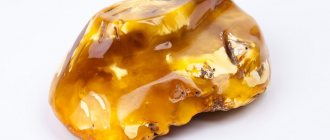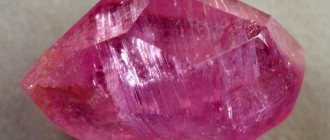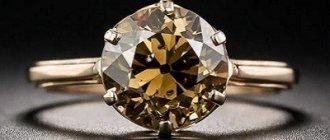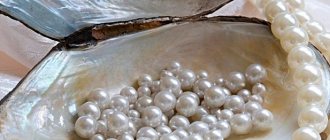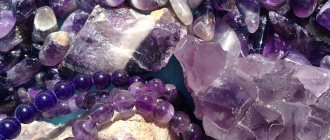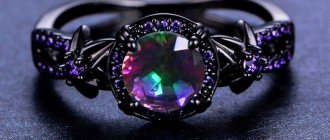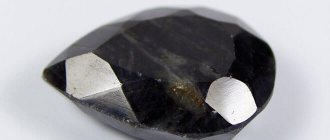» Red » Ruby color and combination with it
Ruby is the color of a gemstone that exhibits regal properties in clothing and interior design. Successful combinations. Photo
The color is the name of a well-known stone, the history of which begins in India approximately 2300 BC. e. Ratnaraj is what he was called in Sanskrit, which means king of gems. And indeed, once in the big world, the stone began to appear on the attributes of power, clothing and jewelry of the nobility and the supreme clergy. The blood-red stone, shimmering with purple, fills with courage and greatness, nobility, and strength. If you look at the ruby color for a long time, you will notice an increase in heart rate, a surge of enthusiasm and energy. But if you do this while depressed or tired, you are more likely to feel irritation or even attacks of anger. The ruby color will not allow you to hold back either positive or negative emotions, so only balanced people can use it on a daily basis. The tone patronizes passionate, faithful love, and jewelry with rubies helps with this.
A story with a touch of magic
Whatever names have been assigned to ruby during its existence. Among the Slavs it bore the name “yakhont”, some Roman connoisseurs called it carbunculus, the Greeks gave the stone the nickname anthrax, and in ancient Sanskrit the ruby was dubbed the king of gems. It is believed that the owner of the stone will gain control of power and strength in order to improve their destiny.
But there are two important points: you cannot wear a ruby all the time, as it can become an energy vampire in relation to the owner; A person who has reached a certain status in life is worthy of owning a stone safely.
To this day, natural ruby is credited with magical and healing properties:
- help in overcoming obsessive fear;
- confrontation with the forces of darkness;
- arousal of irresistible passion;
- treatment of hypotension;
- presence of hemostatic function;
- the ability to invigorate and prevent loss of strength;
- tonic properties.
For your information: the legendary Paracelsus made attempts to treat cancer tumors using ruby.
So where did the magic stone come from, and what color can a ruby be? This is evidenced by scientific facts and many years of geological research.
Magic properties
Initially, the ruby should be considered as a symbol of power. It helps to raise the political weight of its owner. In addition, this gem is a symbol of love. It is able to help its owners; people who own it are capable of love, compassion, and, if necessary, they are ready to make self-sacrifice. The gem speaks of passionate love. As a rule, it is given to those people from whom reciprocity is expected.
Many are sure that the gem changes color when danger approaches. This mineral has enormous supernatural significance. It is an excellent amulet against damage; in addition, it protects the owner from the machinations of ill-wishers. By the way, it was worn by those people who were afraid of poisoning.
Its magical power is widely used by people with paranormal abilities - psychics, etc.
Ruby bloodline
A long time ago, a majestic stone was born in agony from the bowels of the earth. This process occurred during the mutual movement of tectonic layers: crust and magma. The resulting substance, later called aluminum oxide by scientists, came out in the form of a crystal. The value of rubies is due to the fact that their genus is too ancient, and the mystery of the appearance of red minerals goes far into the past. In our time, such movements of the earth's layers do not exist, so the chance to find scarlet stones is only in rock strata about half a million years old.
Types of inclusions
- Cavities. These are voids or holes that extend from the surface of the mineral into the interior.
- Color zoning. This term refers to areas or bands of variable color in a mineral. Color zoning occurs naturally during crystal formation. It is most noticeable in untreated stones.
- Crystals containing minerals. Ruby often contains tiny crystals of pyrite, garnet, zircon, calcite and spinel.
- Liquid inclusions. These are fluid-filled spaces inside the stone. In naturally formed corundum, the presence of carbon dioxide in the form of liquid inclusions is a sign that no heat treatment was used.
- Silk. The term refers to fine needles of rutile. In small quantities, highly reflective rutile needles cause light to scatter within the cut ruby. This process will then lighten the darker facets of the mineral and enhance its shine.
Mineral crystals in ruby
Silk is a type of inclusion that can add value to the stone. Silk is also responsible for the asterism of star rubies. In this case, with the right lighting, three- or six-pointed stars are visible on the sample. This occurs when light reflects off rutile needles, creating a star effect.
When a ruby with abundant silk is cut as a cabochon, the reflections from the rutile needles form a six-pointed star. In rare cases, star rubies can have twelve points. This effect is obtained due to the presence of hematite needles. Because the star's appearance depends on inclusions of silk, star corundums never achieve the degree of purity that is possible in faceted stones.
Dark red ruby cabochon with a perfect six-pointed star
Distinctive features of the king of stones
What color is ruby in nature? This indicator is affected by chromium inclusions. The ruby color palette ranges from hot pink to purple-red. The richest oxblood colored rubies are the most valuable in the world. They seem to glow from within, captivating with their cold beauty.
As for the physical characteristics of the stone, its structure is one of the densest in nature and has an original, shimmering shine: these qualities add to the ruby's resemblance to a diamond. In the old days, it was mined and stored only in India and Burma, but gradually developing trade relations allowed the precious mineral to travel to Egypt, Greece and the great Rome. In addition to healing various ailments, the ruby is famous for the fact that, according to legend, it was given the honor of decorating the ring of the wise King Solomon. In addition, the luxurious stone was an indispensable attribute of the royal regalia and symbols of dominance, however, not forgetting to decorate the graceful fingers of the court ladies.
Physical parameters
Compound
In ancient times, the gem was called yakhont or carbuncle. The basis of the stone is corundum Al2O3. The chromium oxide and iron in its composition give it a blood-red hue. The composition of the gem may include inclusions of rutile.
Physical parameters
Below are the main physical characteristics of the stone:
- Jewel class - 1.
- The Mohs hardness is 9, which is slightly lower than that of diamond.
- Density 3.97 – 4.05 g/cm3.
- One might add that its brilliance is comparable to that of a diamond.
Guest from Burma
The flagship in the ruby sea is undoubtedly a stone from Burma. The famous Mong Shu Mountain conceals in its belly Burmese rubies of the highest grade. These are very valuable stones, characterized by transparency and color saturation. To find out what color a natural ruby mined in Upper Burma is, you need to conjure up a blood-violet hue that does not lose its shine in any light. From the outside it looks very expensive. Looking at a product with a ruby, you can guess its grade and origin by the color of the stone. Mogok Valley ruby ranges in color from light to dark red, but it is important to remember that intense saturation is the hallmark of the Burmese ruby.
Prices for such stones range from $50 per carat, with this being the minimum cost. A further increase in price depends on the color of the ruby, and its quality characteristics are also taken into account. Determining the authenticity of a Burmese ruby is quite difficult. This is done by well-known laboratories that have received the right to issue appropriate certificates.
Primary colors
The base color is blood red. But the gem can also be fiery crimson in color, etc. The most valuable are stones that have a purple or bluish tint. This color is called pigeon blood.
The composition of the gem is close to sapphire, the latter also belongs to corundum. But it doesn't have such a wide range of colors. If someone talks about a green ruby, then most likely they are talking about a sapphire.
Meanwhile, a pink gem exists. This is a young gem with a light pink tint.
Ruby Breath of Tanzania
Minerals worthy of attention are mined in Tanzania. What color is a ruby? A photo of a Tanzanian stone indicates a bright crimson hue, which is impossible to tear yourself away from contemplating. This is what the stones look like after cutting, and what color is a natural ruby from the depths of Tanzania? Cloudy, but often transparent, pink or garnet minerals with pronounced internal defects, but jewelers give them stunning attractiveness with the help of their skill, extracting fiery highlights from the stone heart.
Ruby mining is also organized in Kenya, Madagascar, India, Afghanistan and other countries, but in value they are significantly inferior to Siamese and Burmese types. For example, what color is a ruby from the Kenyan depths? Surprisingly, such minerals have a brownish-yellow tint. And Malagasy stones are distinguished by orange and pink reflections with a pronounced internal silkiness.
Star effect rubies are especially prized: stunningly beautiful, transparent stones, often of intense color. Their cost depends on the saturation of the shade, the degree of clarity and clarity of the outline of the star inside the mineral. They are assessed very subjectively, relying more on one’s own taste than on quality parameters.
Field
Most rubies come from two sources: Myanmar, better known as Burma, and Mozambique. Burmese rubies are considered the standard, as Myanmar is historically the main producer.
Other sources can also produce stones of excellent color and quality, although some have regional characteristics. Rubies are also mined in Thailand, Sri Lanka, Tajikistan, Brazil, Madagascar and some other countries.
Characteristics of natural stone
Based on this, rubies differ in different color saturation and transparency. If a so-called young ruby occurs, what color is it? As a rule, such stones are watery-light, with a pink or lilac tint. In general, rubies in nature are not completely transparent, without foreign inclusions, internal defects and too large a size. Experts can say with confidence what color a real ruby is: the mineral contains shades from light scarlet to dark red. Also, natural stones have a dull shine, and some have a silky sheen.
Durability
The strength of a stone is assessed according to three parameters:
- Hardness
- Strength
- Stability
Ruby is difficult to scratch and ranks 9 on the Mohs scale (hardness 1 to 10) as a type of corundum. Diamonds are the only natural stone harder than corundum.
Toughness refers to a mineral's susceptibility to chipping and cracking. Corundum has no cleavage planes, although it tends to cleave. This means that rubies are very durable and resistant to breaking and cracking.
Stability refers to how much a mineral is affected by things like light, temperature changes, and chemicals. Rubies react little to light, temperature changes and various chemicals. This makes ruby jewelry ideal for frequent use, such as rings and bracelets.
How to distinguish imitation from natural stone?
Among other things, there are several important points that you should pay attention to first. So, the price of the issue. Real rubies are rare and therefore, due to their exclusivity, are quite expensive. The low price of a large stone should be especially alarming - such specimens are too rare and very valuable.
Next is the size of the mineral. Rubies over 5 carats are quite scarce, so they are rare. At a minimum, they are worth examining under a magnifying glass.
And lastly: color. If the buyer’s eyes hurt from contemplating a sparkling, bloody ruby, then he must remember that such stones are rare in nature. In other words, the client is faced with either a fabulously valuable Burmese ruby or a blatant fake.
There are several simple ways to identify the authenticity of a stone:
- Ultraviolet test. Under a blue lamp, a fake ruby turns orange.
- White bubbly inclusions. In natural rubies, bubbles are extremely rare and are identical in color to the stone itself. Whereas in fake minerals the circles are light in color or hollow.
- Natural stone is usually cold and heats up with great difficulty, unlike its artificial counterparts.
- If you place a ruby in a glass of milk, it will turn the liquid pink.
- Natural stone looks different from different angles.
- If a crack is found in a stone, then in a natural mineral it will be uneven and will not shine, as in a counterfeit one.
Therefore, when choosing an expensive ruby, you should definitely consult with a knowledgeable jeweler or gemologist.
Rubies are natural creations that will take your breath away when you look at them. It doesn’t matter what color the ruby is: they are used to create talismans for different zodiac signs, amulets that can protect against the forces of evil. They are credited with magical properties and endowed with healing characteristics. And finally, ruby makes magnificent jewelry worthy of decorating royal houses. A natural mineral of such a high class is an excellent choice of real sybarite.
Size
The size of a gemstone, expressed in unit weight, is called a carat (abbreviated “ct”). A carat is a metric unit equal to one-fifth (0.20) of a gram. A one carat ruby will appear smaller than a diamond due to its high specific gravity.
It is worth noting that usually the size of a ruby does not exceed 1 carat. This is because chromium, which causes its red color, is relatively rare in corundum.
Oval cut ruby 1 carat $1500
Ruby forms in the earth's crust in the form of octahedral crystals, that is, wide and flat plates. This makes large rubies difficult to cut and makes stones larger than a carat exceptionally rare.
While a five-carat size is considered small for an aquamarine, a quality five-carat ruby is large enough to attract the attention of serious collectors. High quality stones of more than one carat are rare and very expensive. The most valuable ruby is intense, bright red, large in size (over 5 carats), fairly clean and perfectly cut.
2 carat pigeon blood ruby $15,000
Who is suitable according to the horoscope?
The gem is a solar gem and belongs to the fire element. It suits those zodiac signs corresponding to fire. That is, Leo, Aries and Sagittarius. It is not suitable for signs related to water - Cancer, Pisces. It is not recommended to use this gem for Taurus and Virgo.
For Capricorn, this gem is useless, it does not bring any benefit, but there will be no harm from it.
Talismans and amulets
The gem acts perfectly as a talisman for military and fire fighters. He protects them from death. The gem warns owners of danger by changing color. In addition, it is believed that a talisman with a gem protects against natural disasters
If there is a gem in the house, it will protect the house from fire and intruders. As they say, if a gem talisman is constantly near its owner, then luck will accompany him in everything and everywhere.
The energy of the stone allows you to strive for everything new. A talisman made from it helps creative people and those who are engaged in mental work. In addition, the talisman will always help those who love different adventures. And also, if you dream of a ruby, then the person will soon experience luck and prosperity.
Indian magicians sincerely believed that the stone influenced a person’s actions and provided broad power to its owner. But, on the other hand, the mineral causes positive emotions in people.
Medicinal properties
The healing properties have been well known to people since ancient times. Lithotherapists use it to treat the digestive organs and joints. In addition, the use of the mineral helps to increase the body's resistance, saves from insomnia and depression.
If the gem is placed in water and left for 24 hours, the infused water will help rejuvenate the skin and restore damaged cells. Significantly makes you feel better when you have a cold. Improves the quality of metabolism and removes toxins from the body.
This gem is considered feminine. It protects them from various kinds of gynecological problems.
